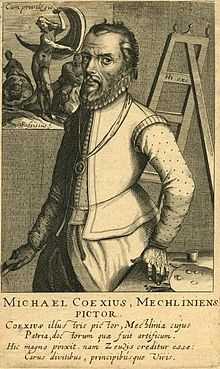Simon Frisius

Simon de Vries or Simon Frisius (1570–75, Harlingen – 1628/29, The Hague),[1] was a Dutch engraver, who appears to be related to Hans Vredeman de Vries (1527—c.1608). He was born at Harlingen
Frisius is regarded as one of the first to bring etching to perfection. Abraham Bosse, in his treatise on the art of engraving, observes that the first artist to whom he was indebted for intelligence was Simon Frisius, whom he thinks was entitled to great credit, as being one of the first to handle the point with freedom and facility. His etchings are bold and masterly; and in his hatchings he approaches the neatness and strength of the graver. The prints of De Vries are scarce, and are much esteemed. The small figures which he occasionally introduced into his landscapes are correctly drawn. He frequently marked his plates S. F. fecit, but sometimes with the word fecit only. He started his career in Paris, and worked in Rouen and Amsterdam before moving to the Hague in 1611 where he became a member of the Confrerie Pictura.[1] He travelled in France, Spain, Germany, Bohemia, and Russia.[1]
The following are his principal works:

- A set of twelve small heads of female Saints and Sibyls; after his own designs.
- A set of Portraits; after Hendrik Hondius.
- A set of twelve plates of Birds and Butterflies; after Marcus Geerarts.
- Twenty-five Views and Landscapes; entitled, Typographia variarum Regionum; after Matthys Bril. 1611.
- A mountainous Landscape on the Sea-coast, with figures; after Hendrik Goltzius.
- A Landscape, with a Tower; after the same. 1608.
- A Landscape, with the story of Tobit and the Angel; after P. Lastman.
- A Landscape, with the Flight into Egypt; after H. Hondius.
- A Landscape, with two pastoral figures; highly finished, and very scarce.
| Wikimedia Commons has media related to Simon Frisius. |
References
- ↑ 1.0 1.1 1.2 Simon Frisius in the RKD
This article incorporates text from the article "DE VRIES, Simon" in Bryan's Dictionary of Painters and Engravers by Michael Bryan, edited by Robert Edmund Graves and Sir Walter Armstrong, an 1886–1889 publication now in the public domain.